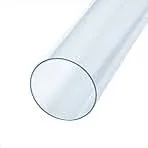Nov . 19, 2024 09:27 Back to list
Versatile Applications and Benefits of Polypropylene PP Sheets in Various Industries
Understanding Polypropylene (PP) Sheets
Polypropylene, commonly referred to as PP, is a thermoplastic polymer that is widely used for a variety of applications due to its unique combination of properties. One of the most versatile forms of polypropylene is PP sheets, which are frequently utilized across different industries, including packaging, automotive, medical, and construction.
Properties of Polypropylene Sheets
Polypropylene sheets are known for their excellent chemical resistance, making them ideal for applications that involve exposure to corrosive substances. They possess a high melting point, which allows for use in environments where temperature control is critical. Additionally, PP sheets are lightweight yet strong, offering a good balance between durability and ease of handling. They are also flexible, making them suitable for various fabrication processes.
Another notable characteristic of polypropylene sheets is their low moisture absorption, which ensures they maintain physical integrity in humid environments. This property is particularly beneficial for packaging applications, as products remain protected from water damage. Furthermore, PP sheets can be transparent or colored, making them a popular choice for aesthetic applications, such as point-of-purchase displays and signage.
Applications of Polypropylene Sheets
polypropylene pp sheet

The versatility of polypropylene sheets lends itself to numerous applications. In the packaging industry, PP sheets are used for creating containers, boxes, and lids that require a durable and moisture-resistant material. In the automotive sector, they are employed in interior and exterior components, where lightweight materials contribute to fuel efficiency without compromising safety.
In the medical field, polypropylene sheets are crucial for disposable items, such as syringes and surgical packaging, due to their sterility and bio-compatibility. The construction industry also utilizes PP sheets for various purposes, including vapor barriers, formwork, and insulation panels, highlighting their adaptability across different contexts.
Environmental Impact and Recycling
As the demand for eco-friendly materials grows, the recyclability of polypropylene sheets is a significant advantage. Polypropylene is one of the more commonly recycled plastics, and initiatives for recycling PP materials are increasing. This ability to recycle helps reduce the environmental impact associated with plastic waste, promoting sustainable practices within industries that rely on PP sheets.
Conclusion
Polypropylene sheets have carved out a significant niche in the material market due to their distinctive characteristics and broad range of applications. As industries continue to seek innovative solutions that combine performance with sustainability, PP sheets will likely remain a vital material for years to come. Understanding their properties and applications can help businesses make informed decisions on their use in various projects.
-
High-Quality PPR Pipes and Fittings Durable ERA PPR & PVC PPR Solutions
NewsJul.08,2025
-
Black HDPE Cutting Board - Durable, Non-Porous & Food Safe HDPE Plastic Cutting Board
NewsJul.08,2025
-
High-Quality CPVC Panel Durable HDPE & PVC Panels Supplier
NewsJul.08,2025
-
Double PE Welding Rod Supplier - High Strength, Durable & Versatile Welding Solutions
NewsJul.07,2025
-
High-Quality PVC-O Pipe Supplier Durable 75mm PVC Pipe & Connections Leading PVC Pipe Company
NewsJul.07,2025
-
HDPE Drainage Pipe Supplier – Durable & Corrosion-Resistant Solutions
NewsJul.06,2025

